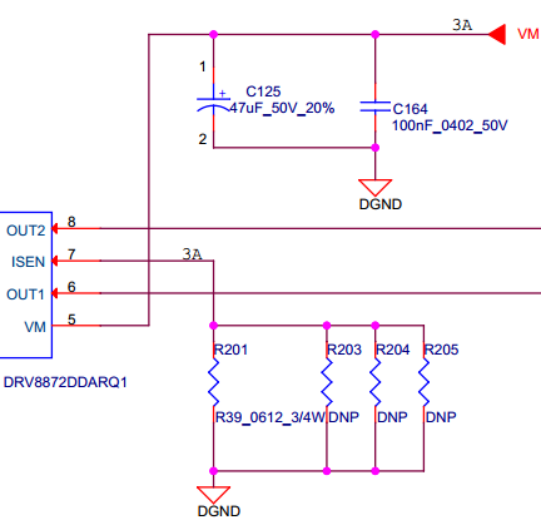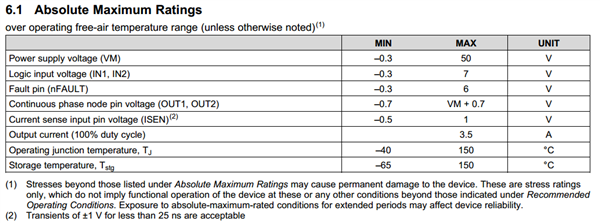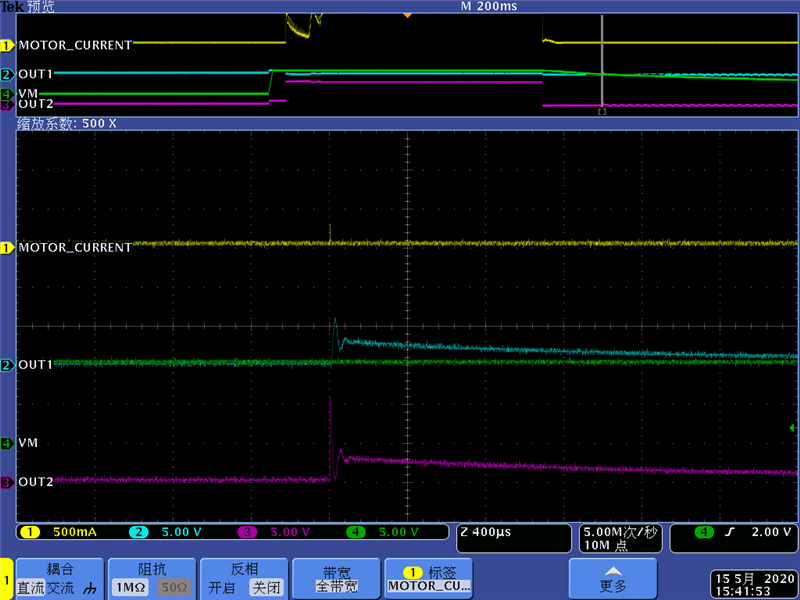Other Parts Discussed in Thread: DRV8872EVM
Dear expert:
Question1: What's the max voltage of pin out2, 12.7V or 50.7V? Considering VM is 12V in my application. Continuous phase node pin voltage (out1,out2) is found to be VM+0.7V in table6.1.
Question1: Now I want to pass one EE test: pin out2 short to 32V for 60s when VM is not present. Will DRV8872Q1 be damaged?







